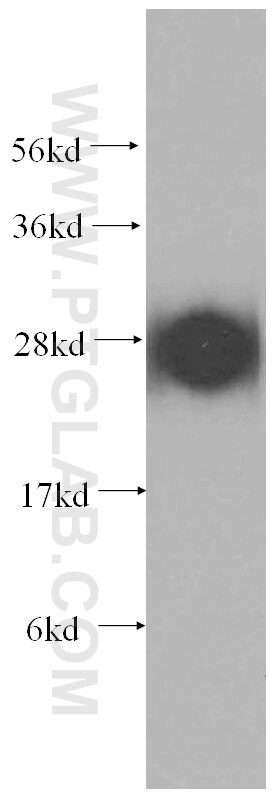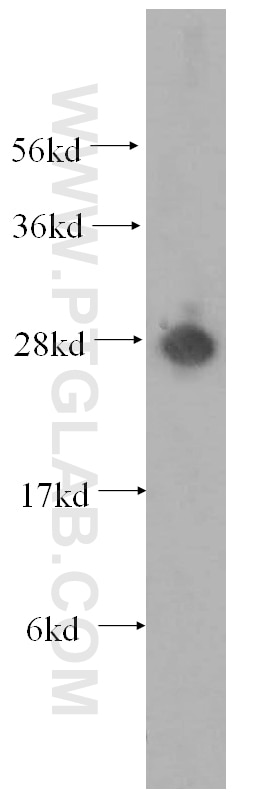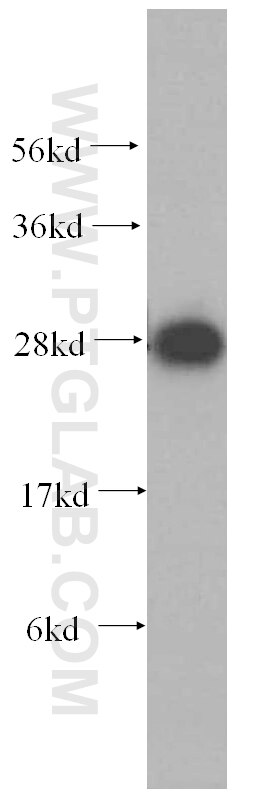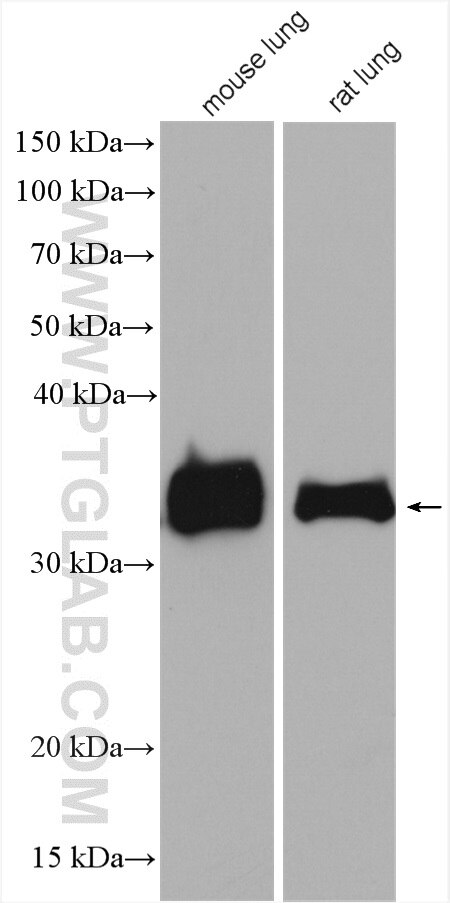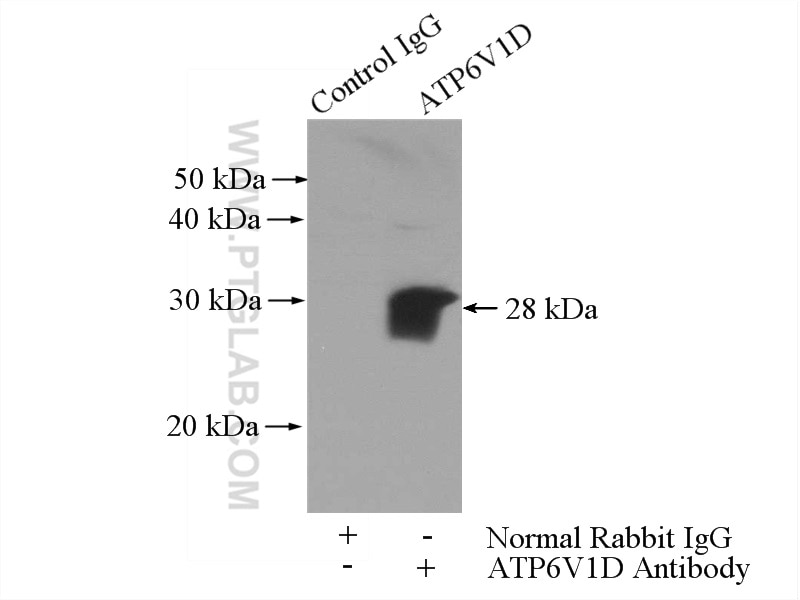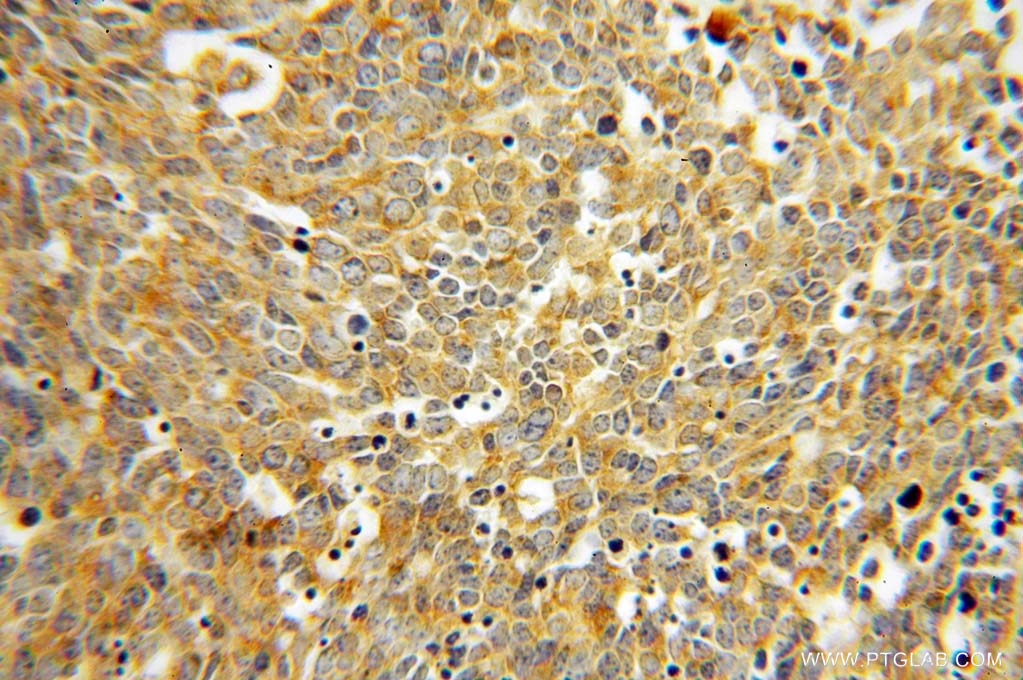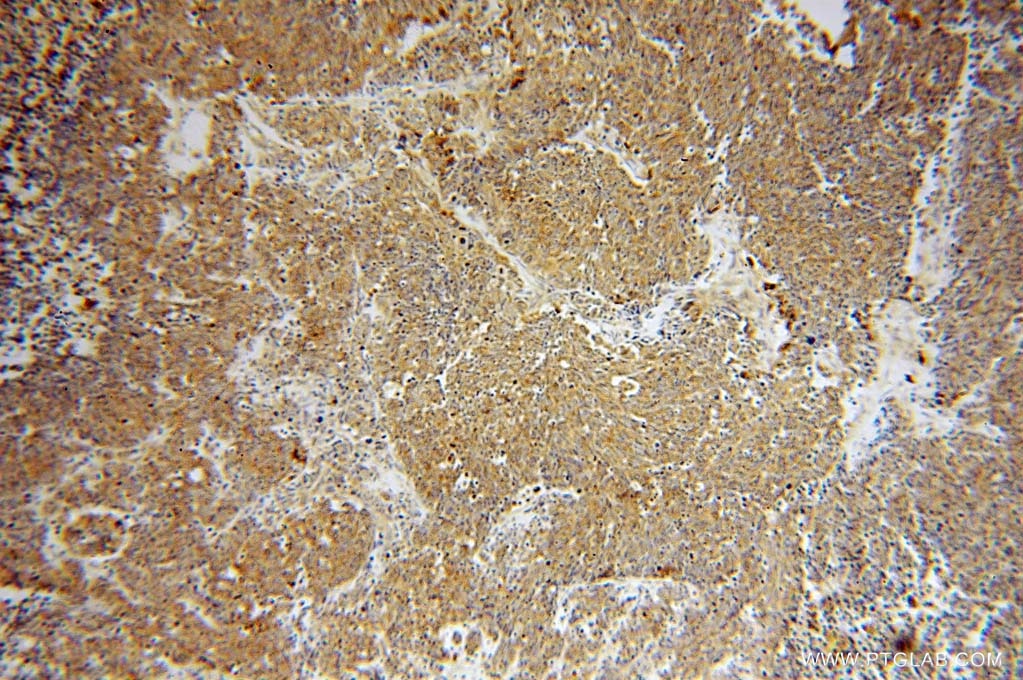Anticorps Polyclonal de lapin anti-ATP6V1D
ATP6V1D Polyclonal Antibody for WB, IP, IHC, ELISA
Hôte / Isotype
Lapin / IgG
Réactivité testée
Humain, rat, souris
Applications
WB, IHC, IP, ELISA
Conjugaison
Non conjugué
N° de cat : 14920-1-AP
Synonymes
Galerie de données de validation
Applications testées
| Résultats positifs en WB | tissu cérébral humain, tissu de muscle squelettique de souris, tissu pulmonaire de rat, tissu pulmonaire de souris |
| Résultats positifs en IP | tissu pulmonaire de souris |
| Résultats positifs en IHC | tissu de cancer du poumon humain il est suggéré de démasquer l'antigène avec un tampon de TE buffer pH 9.0; (*) À défaut, 'le démasquage de l'antigène peut être 'effectué avec un tampon citrate pH 6,0. |
Dilution recommandée
| Application | Dilution |
|---|---|
| Western Blot (WB) | WB : 1:500-1:2400 |
| Immunoprécipitation (IP) | IP : 0.5-4.0 ug for 1.0-3.0 mg of total protein lysate |
| Immunohistochimie (IHC) | IHC : 1:20-1:200 |
| It is recommended that this reagent should be titrated in each testing system to obtain optimal results. | |
| Sample-dependent, check data in validation data gallery | |
Applications publiées
| WB | See 10 publications below |
| IP | See 1 publications below |
Informations sur le produit
14920-1-AP cible ATP6V1D dans les applications de WB, IHC, IP, ELISA et montre une réactivité avec des échantillons Humain, rat, souris
| Réactivité | Humain, rat, souris |
| Réactivité citée | rat, Humain, souris |
| Hôte / Isotype | Lapin / IgG |
| Clonalité | Polyclonal |
| Type | Anticorps |
| Immunogène | ATP6V1D Protéine recombinante Ag6737 |
| Nom complet | ATPase, H+ transporting, lysosomal 34kDa, V1 subunit D |
| Masse moléculaire calculée | 28 kDa |
| Poids moléculaire observé | 28 kDa |
| Numéro d’acquisition GenBank | BC001411 |
| Symbole du gène | ATP6V1D |
| Identification du gène (NCBI) | 51382 |
| Conjugaison | Non conjugué |
| Forme | Liquide |
| Méthode de purification | Purification par affinité contre l'antigène |
| Tampon de stockage | PBS with 0.02% sodium azide and 50% glycerol |
| Conditions de stockage | Stocker à -20°C. Stable pendant un an après l'expédition. L'aliquotage n'est pas nécessaire pour le stockage à -20oC Les 20ul contiennent 0,1% de BSA. |
Informations générales
ATP6V1D is also named as ATP6M, VATD(V-type proton ATPase subunit D) and belongs to the V-ATPase D subunit family. ATP6V1D gene has been under strong negative selection during evolution and is highly conserved among mammals, flies, worms, yeast, plants, and bacteria(PMID:11435709). It is responsible for acidifying a variety of intracellular compartments in eukaryotic cells, thus providing most of the energy required for transport processes in the vacuolar system.
Protocole
| Product Specific Protocols | |
|---|---|
| WB protocol for ATP6V1D antibody 14920-1-AP | Download protocol |
| IHC protocol for ATP6V1D antibody 14920-1-AP | Download protocol |
| IP protocol for ATP6V1D antibody 14920-1-AP | Download protocol |
| FC protocol for ATP6V1D antibody 14920-1-AP | Download protocol |
| Standard Protocols | |
|---|---|
| Click here to view our Standard Protocols |
Publications
| Species | Application | Title |
|---|---|---|
Cell Mol Life Sci The Ncoa7 locus regulates V-ATPase formation and function, neurodevelopment and behaviour. | ||
J Ethnopharmacol Tangshen formula protects against podocyte apoptosis via enhancing the TFEB-mediated autophagy-lysosome pathway in diabetic nephropathy | ||
J Proteome Res Quantitative proteome of medulla oblongata in spontaneously hypertensive rats. | ||
Mol Cell Proteomics Multi Cell Line Analysis of Lysosomal Proteomes Reveals Unique Features and Novel Lysosomal Proteins | ||
Autophagy Inhibition of autophagy and induction of glioblastoma cell death by NEO214, a perillyl alcohol-rolipram conjugate | ||
Nat Commun Cross-linking of the endolysosomal system reveals potential flotillin structures and cargo |
